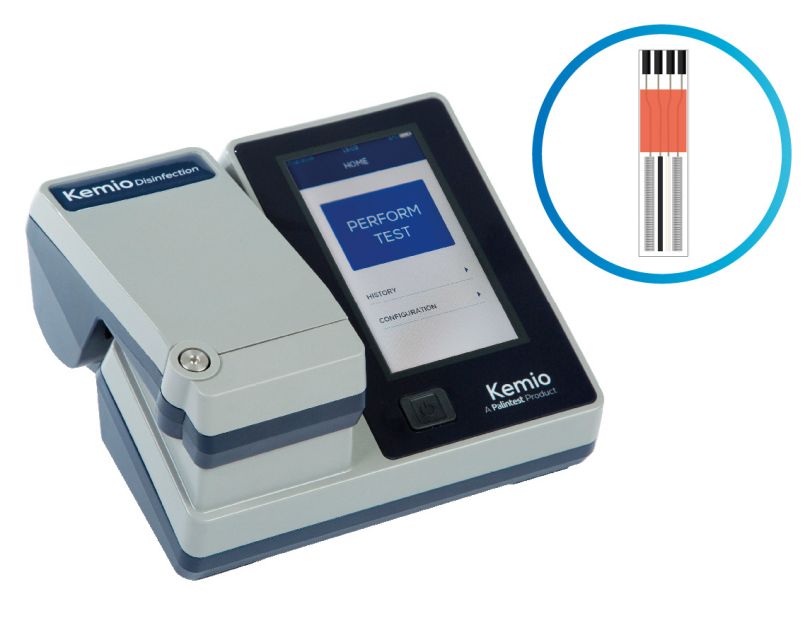Tips on explaining the benefits of ozone generators to homeowners

Updated 12/29/20
Ozone is increasing in popularity in U.S. residential water treatment as an alternative to chlorine and potassium permanganate disinfection. The Food and Drug Administration (FDA) approved ozone for bottled water production in the 1980s, and it is now approved for food processing. The time has come for ozone to become a standard in residential water treatment as well.
As more manufacturers develop residential ozone technologies, new options will be available to dealers and customers. One challenge dealers will face, however, is helping homeowners understand how ozone works to treat water.
If you are knowledgable about the science surrounding ozone, explaining the process without talking over a customer’s head can be challenging. Keeping things simple is the best move. Here are some ways to have focused, easy-to-understand conversations about ozone with homeowners.
Tell the Homeowner What Ozone Is
Most people have heard of ozone thanks to media coverage about pollution and the ozone layer. But for many, that is where their knowledge ends. The first thing you should tell a homeowner is that ozone is nothing more than O3—three oxygen atoms bound together.
Residential water treatment dealer Paul Zachman of Zachman’s WaterCare in St. Paul, Minn., has field tested ozone generators for Water-Right. He says it is important to tell homeowners that ozone is a naturally occurring substance. “Ozone is generated when lightning strikes,” Zachman explained. That is why some say you can smell ozone in the air after a thunderstorm. However, this is not the most accurate description of the odor. If your customers have ever been around electric motors, they may have noticed a pungent smell—that is ozone. In fact, the word ozone is derived from the Greek word for “smell.”
While inhaling too much ozone gas can be toxic, homeowners never will be exposed to dangerous levels from residential ozone water treatment systems.
Tell the Homeowner How Ozone Treats Water
To help explain how ozone treats water, you may need to go over a bit of basic chemistry with your customers. In its normal state, oxygen exists as two atoms bound together (O2). Ozone is unstable. That extra oxygen atom wants to hook up with other material, like unwanted microorganisms in water filtration systems. For the purpose of disinfecting water, ozone comes in contact with contaminants and pathogens that can damage equipment and get in the water supply. The extra oxygen atom oxidizes the contaminant and the O3 becomes O2—just plain old oxygen.
Some ozone generators use the corona discharge method, which is similar to how lightning produces ozone. If you sell this type of system, explain to the homeowner that an electrical charge creates the ozone from oxygen in the air before it is sucked into the system through a vacuum. Other ozone-generating methods may use ultraviolet light, which is how the sun creates the ozone layer in Earth’s atmosphere.
Ozone is a highly effective disinfectant that can eliminate and deactivate a variety of contaminants and pathogens. Zachman finds it is useful for targeting iron bacteria, which can get trapped in iron filters.
“That is a really big problem in my area—everyone has iron bacteria to a degree,” Zachman said. “Sometimes with the more traditional systems, you [would] disassemble them ... and the pipe, the head of the iron filter, would just be clogged. I’m basically using it to prevent the iron bacteria from colonizing in my filtration equipment.”
Explain the Benefits of Ozone to the Homeowner
Safety is probably the biggest benefit of using ozone. It is an ideal substitute for chlorine or potassium permanganate.
“[Safety] was my concern, having used both potassium permanganate and chlorine feeders. [With those disinfectants] there’s a chance of some type of mechanical malfunction,” Zachman said. With potassium permanganate, he was concerned blue water could start coming out of a homeowner’s faucet and a young child would think it was Kool-Aid.
When used as a disinfectant, chlorine can leave behind byproducts called trihalomethanes (THMs), which are known carcinogens. Ozone does not produce any byproduct other than pure oxygen. Because the U.S. Environmental Protection Agency imposes strict regulations on THM levels in domestic water, ozone is becoming the disinfectant of choice for many municipal water treatment plants as well.
Ozone’s short half-life, which is believed to be less than 30 minutes, makes it even less of a risk to homeowners. “Then it fades away after that point, or expends its energy and becomes regular oxygen,” Zachman said.
Ozone generators also can make life easier for customers because they will not need to change chemicals—the ozone is created on site. The ozone generator also helps keep customers’ equipment running smoothly. “Basically, what ozone does for me is make the equipment perform better than it did before,” Zachman said.
Homeowners may ask about specific health benefits of ozonated water. There may be some advantages pertaining to ozone and health; however, at this point these claims are not substantiated. While the FDA approves the use of ozone as a water disinfectant, it has not yet approved it for any sort of medical or therapeutic purpose.
Let the Homeowner Know What to Expect
Homeowners may notice a difference in water’s appearance when ozonated water first comes out of the faucet. “If you look at it closely, there are lots of microscopic bubbles that make it look like there’s almost a cloud in the glass,” Zachman said. “Then these bubbles come to the top and gas off and the water is nice and clear again.”
That happens with any type of aeration, but can be more noticeable with ozone. Zachman suggests talking with customers before they wrongly assume it is a problem.
“Most people are not bothered by it at all, as long as they know it’s going to do that,” he said. “But you’re opening the door to a lot of questions if you haven’t answered that. I just tell them before they ask.”
Remind customers that oxygen helps drinking water smell and taste better. In the end, water that is cleaner and better tasting is what every homeowner really wants.
Read original article here!






